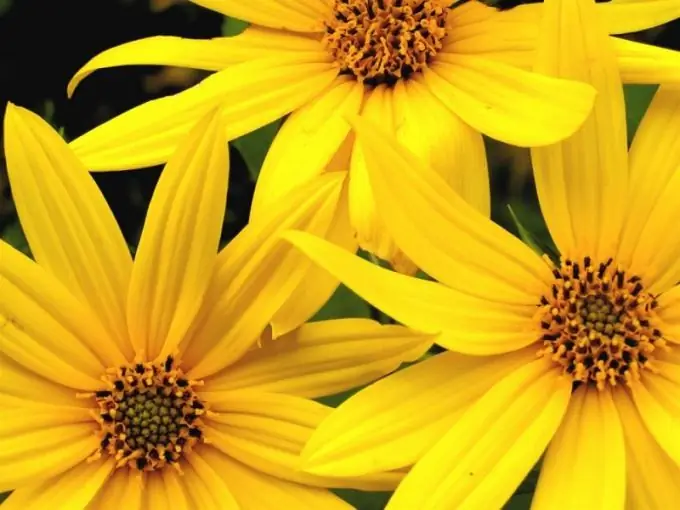Jerusalem artichoke or "earthen pear" has been cultivated in Russia for more than three centuries. The roots of this relatively unpretentious plant are a storehouse of vitamins, trace elements, organic acids, but most importantly, Jerusalem artichoke contains inulin - an analogue of insulin, a substance indispensable for patients with diabetes mellitus. In order for Jerusalem artichoke to take root on your site, follow a few rules for growing it.

Instructions
Step 1
The best time to plant an "earthen pear" is autumn or early spring, when the ground is already warm enough. In the fall, plant whole tubers in the ground, and in the spring they can be divided into several parts.
Step 2
As a rule, a separate ridge is not distinguished for Jerusalem artichoke. This plant feels comfortable in any free place: along the hedge, not far from young trees and shrubs. Jerusalem artichoke can perfectly disguise a compost heap, since its height reaches 1.5–2 meters. However, do not plant the plant in an area that is too humid, especially where rainwater builds up. "Earthen pear" does not tolerate excessive moisture very well and can die in a particularly rainy year.
Step 3
Place the Jerusalem artichoke tubers in the soil at a distance of at least 40 centimeters from each other. The planting depth is determined by the size of the root crop: small tubers are lowered into the ground by 5–7 cm, larger specimens by 10–15 cm. In addition, it should be borne in mind that the autumn planting should be somewhat deeper than the spring planting.
Step 4
Jerusalem artichoke is considered a very unpretentious crop to care for and does not require special fertilization. For the plant to bear fruit every fall, feed it with organic matter (humus or chicken droppings) once every 2-3 years. Apply small amounts of mineral fertilizers annually.
Step 5
Spud Jerusalem artichoke only if the tubers are very close to the ground. This plant thrives in abnormal heat and low temperatures. "Earthen pear" will retain its vegetative abilities even at temperatures up to minus 5 degrees.
Step 6
Harvesting can be done twice a year: in late autumn (just before the frost) and in spring. The fact is that Jerusalem artichoke tubers are much better preserved in the ground than in the basement. Process the harvested root vegetables right away: eat them or preserve them, otherwise they will quickly wither and become covered with mold.







